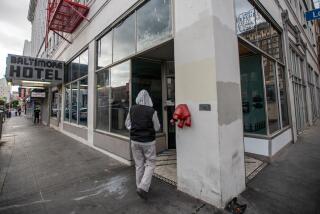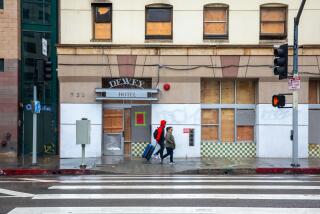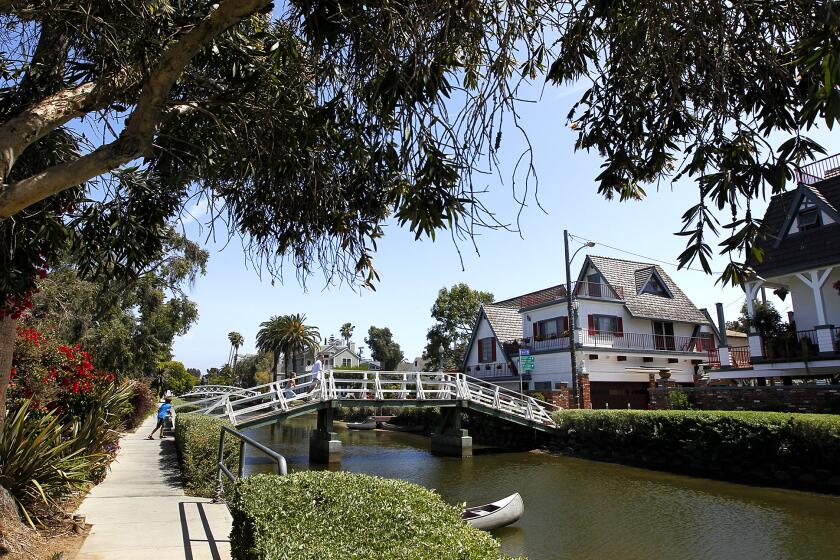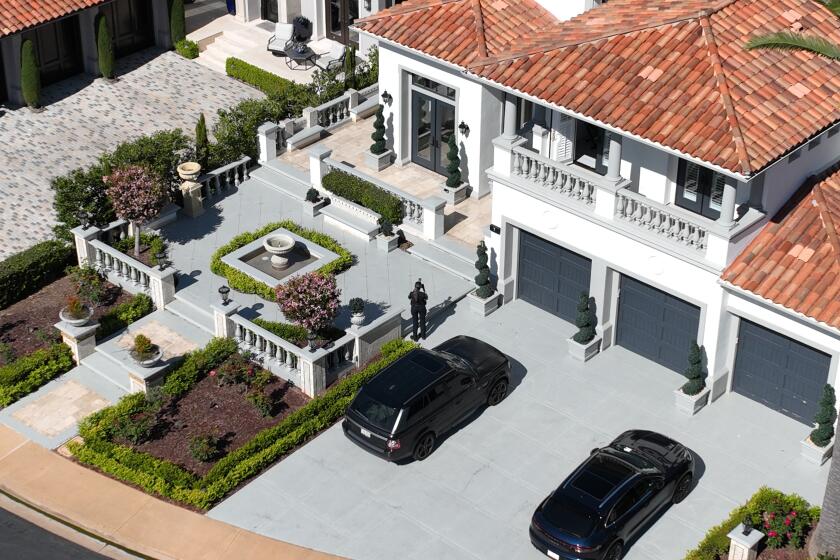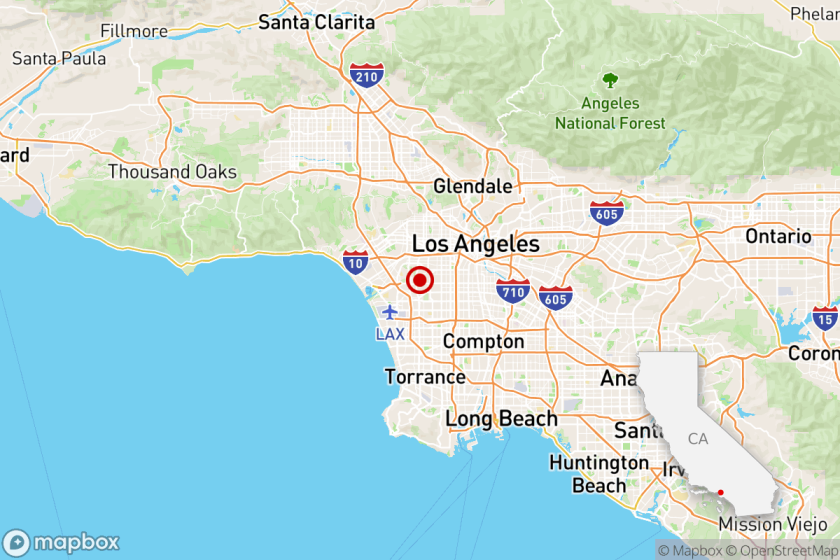L.A. plan to ‘gentrify’ skid row will oust poor residents, advocates say

Activists on Friday lashed out against a city proposal to develop skid row, saying L.A.’s “gentrification” plan threatens one of the last bastions of housing for the very poor and disregards the fate of 2,100 people living on the downtown district’s grimy sidewalks.
The skid row proposal, which could be voted on in early 2019, is part of a new central city community plan called DTLA 2040, which is aimed at supporting downtown’s growth as a major residential neighborhood and center for creative and mixed-use office space.
The skid row portion of the draft plan would rezone industrial property along the east-west corridors of 5th, 6th and 7th streets for market-rate housing, while accommodating social service agencies and permanent supportive housing on north-south streets.
At a news conference Friday, a coalition of longtime skid row groups said the rezoning would open the floodgates to the high-end luxury housing that dominates the rest of downtown, driving up rents and eventually ousting 4,000 people living in the district’s single-room occupancy hotels and other modest lodgings.
The group, called Skid Row Now and 2040, released a report calling for private developers to plow profits they will make off the rezoning into developing 7,000 very-low-income skid row units, enough to house every homeless person living in skid row’s “humanitarian crisis zone” and more.
“We need to get everybody off the street and that should happen before building buildings that will overwhelm [skid row] with the voice of money and power … making people uncomfortable in their own neighborhood,” said John Malpede, founding artistic director of Los Angeles Poverty Department theater group. Other members of Skid Row Now include Los Angeles Community Action Network and the Inner City Law Center.
Activists spoke in front of a former substance abuse treatment center that has been shuttered for several years — the result, they said, of land speculators waiting for the development “windfall” they expect from the city’s rezoning plan.
Mayor Eric Garcetti, in a statement, said the city is doing “everything in its power” to keep skid row residents in downtown, including passing an ordinance that requires replacing every demolished or converted residential hotel room at the same affordability level.
Downtown City Councilman Jose Huizar said he welcomed the advocates’ ideas, and supported creating 7,000 skid row housing units.
“For too long we allowed a policy of containment that has created the largest concentration of homelessness in the nation,” Huizar said in a statement. “We must envision a more mixed-income environment for all our neighborhoods, and that also means incorporating more affordable housing into the rest of downtown, too.”
A spokesman for the planning department said housing homeless people is a “core priority” for the city, which in the past year has made it easier to fund and build affordable units. The city has pledged to develop 10,000 units over 10 years with money from Proposition HHH, a voter-approved $1.2-billion property tax.
“Working alongside our community partners, we will achieve consensus around our shared values — and advance policies that reflect the need for more supportive housing and social services within the skid row area,” said spokesman Yeghig Keshishian.
But Steve Diaz, a member of Los Angeles Community Action Network, said the city had shut skid row out of the planning process in favor of well-heeled residents from the adjoining historic core neighborhood.
Inner City Law Center director Jerry Jones, who authored the report, said in addition to new affordable housing, advocates want existing housing preserved and very strong development controls adopted to stop housing displacement.
Without additional safeguards, “We will stop this plan dead in its tracks,” Jones said.
The plan is expected to come before the City Council and Mayor Eric Garcetti next year.
Twitter: @geholland
UPDATES:
6:15 p.m.: This article was updated with a comment from Los Angeles Mayor Eric Garcetti.
This article was originally published at 1:45 p.m.
More to Read
Start your day right
Sign up for Essential California for news, features and recommendations from the L.A. Times and beyond in your inbox six days a week.
You may occasionally receive promotional content from the Los Angeles Times.
